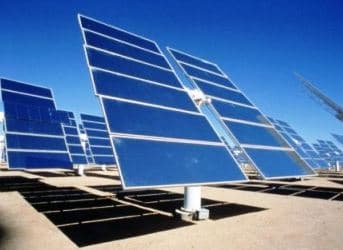I have always considered there are only two key rationales for investing in solar energy: for economic benefit (through subsidies or not), or for altruism. But the solar industry has seen a break in the clouds to start this year, and although it has been in part due to chasing profits, it has also been due to a third reason which has been hidden from me in plain view…that of necessity.
So let us take a look at some recent developments in the solar industry to assess its progress on the path to enlightenment, or to see whether it is still stuck in the shadows.
The horrific levels of smog seen in China in the last week have starkly underscored the need for the largest emerging market to clean up its act (and reduce its 70% reliance on coal). Air pollution in Beijing last weekend reached a record – almost 12 times the recommended level by Chinese standards (and 25 times by US standards). The most worrying takeaway from all of this was that Beijing wasn’t even one of the worst ten Chinese cities on the air-quality index on that day.

Relevant Article: Solar and Big Oil Join Forces in Middle East
In the midst of these spiralling pollution problems, China has announced that it plans to double its installed capacity for solar electricity. Capacity is currently at 7 gigawatts, with a goal of 15 gigawatts by 2015. With the duplicitous benefit of looking both proactive about reducing pollution while propping up its ailing local solar industry (which has suffered from global overcapacity due to falling margins), the Chinese government is considering raising the target to 40 gigawatts by 2015.
Saudi Arabia is another country which is looking for solar solutions out of necessity. The oil-rich nation has become increasingly reliant on the direct burning of oil to meet rapidly rising power generation demand. Not only is this method one of the more pollutive forms of power generation but it also limits oil exports, and hence government revenues. Last year Saudi used on average over 500,000 barrels a day to meet this need, with levels surpassing 1 million barrels a day during the peak summer months (approximately 10% of total oil production).
With energy consumption set to double by 2030 (and oil consumption expected to reach 8 million barrels a day), it is looking to invest $109 billion to install 42 gigawatts of solar power by 2032, with the aim of it meeting a third of its power needs. The recent announcement of both this goal and the inauguration of the largest solar energy field in the Kingdom led to an industry report this week aptly saying, ‘Saudi Arabia will be the Saudi Arabia of solar energy’.

But doubt still stalks at the heart of the matter as to whether solar power will ever be feasible on a widespread basis without subsidies.
But there is heartening news on this front. A recent article from The Economist highlighted the best thing that the solar industry has going for it is something called Swanson’s law. The law suggests that the cost to generate solar power falls by 20% with each doubling of global manufacturing capacity. As the chart below illustrates, the modules used to make solar-power plants have dropped to less than a dollar per watt of capacity.
Relevant Article: Advances in Fullerene Technology Boosts Organic Solar Cell Efficiency
This means in theory that the sunniest areas of the US could already compete with more expensive parts of the traditional power market such as natural gas ‘peaker’ plants which meet surges in demand… without subsidies. That said, the price is still a country mile away from being price competitive with other traditional forms of power generation, but given technological development, Swanson’s law indicates prices still have further to drop.

Swanson’s law is named after Richard Swanson, who is the founder of US solar-cell manufacturer SunPower Corp. And it is here that we round out this solar story, because world-famous investor Warren Buffett kicked off the year by purchasing two projects from SunPower Corp for $2.5 billion through his company, MidAmerican Energy Holdings. These acquisitions ignited a strong rally across solar stocks, giving a solid boost to sentiment in the industry.

These three current events serve to highlight the brighter side of the solar industry. But this is just one side of the story; there are just as many darker issues faced, such as the end of solar subsidies in Europe which could send demand off a cliff.
But just as the volatile history of solar stocks tells us to be wary of getting swept up in bouts of optimism, such examples – from smog to Saudi to Swanson’s law – indicate that solar is here for the long-haul, even if this positive start to the year is just another false dawn.
By. Matt Smith



















However, the long term trend still ought to be down.